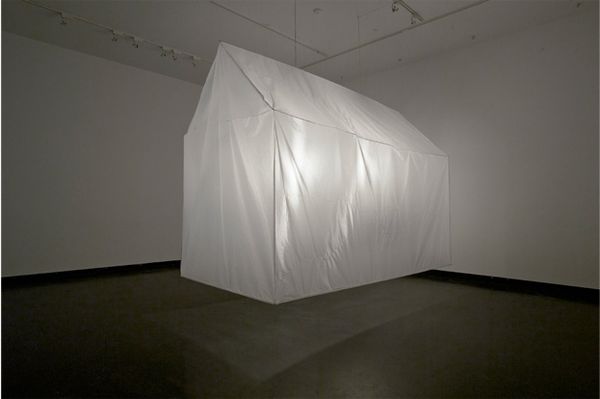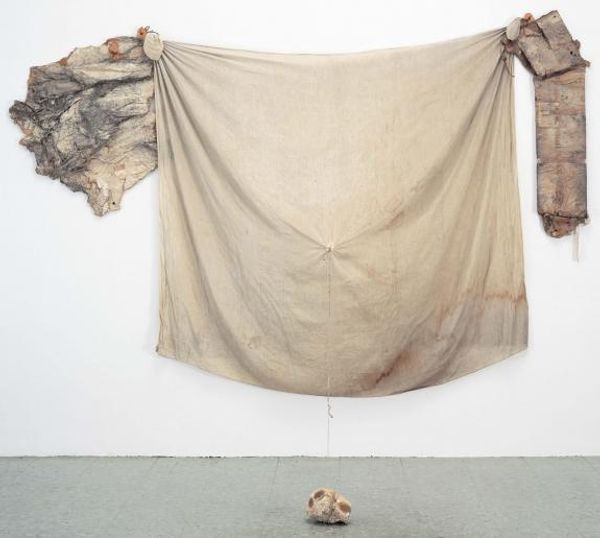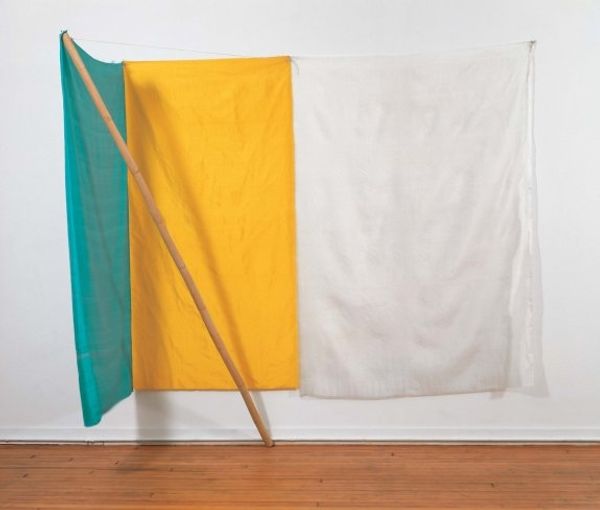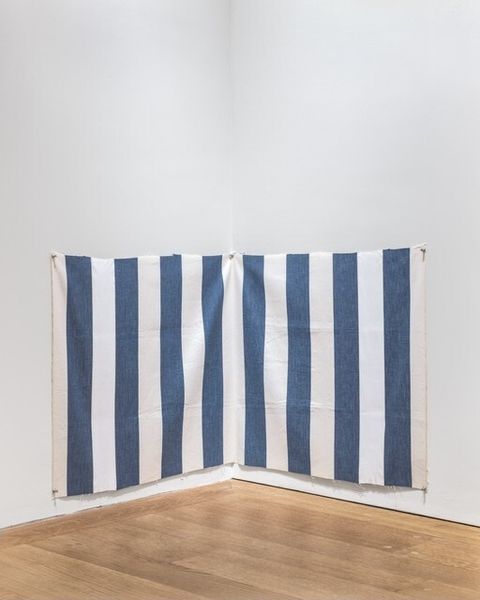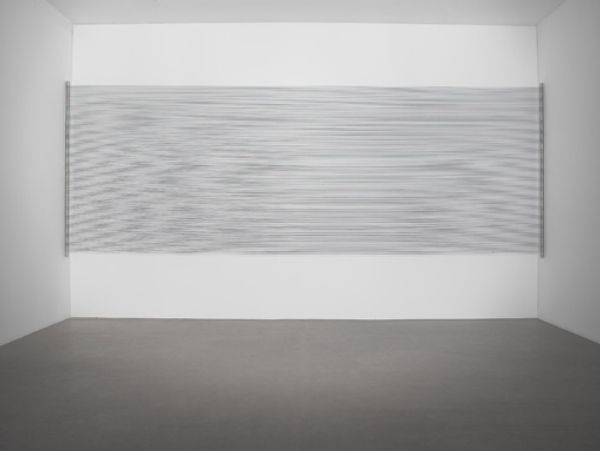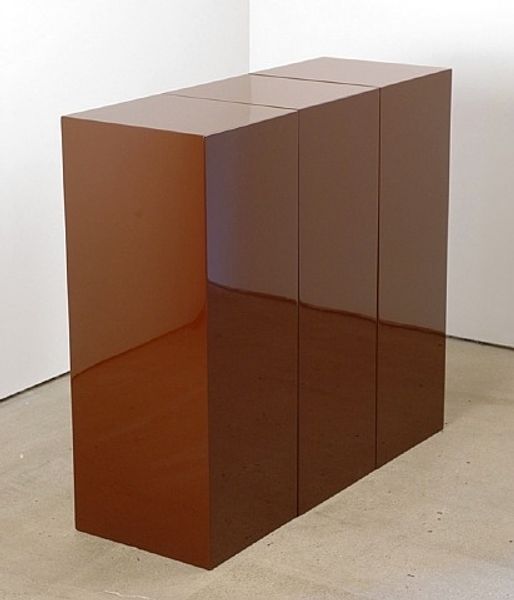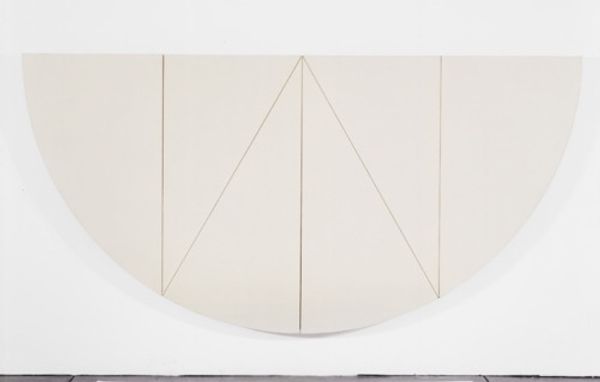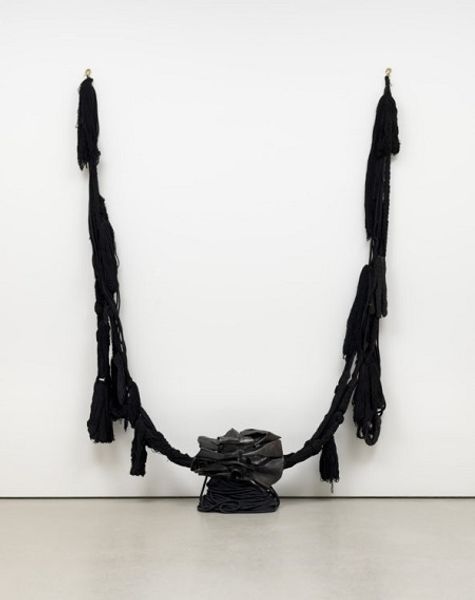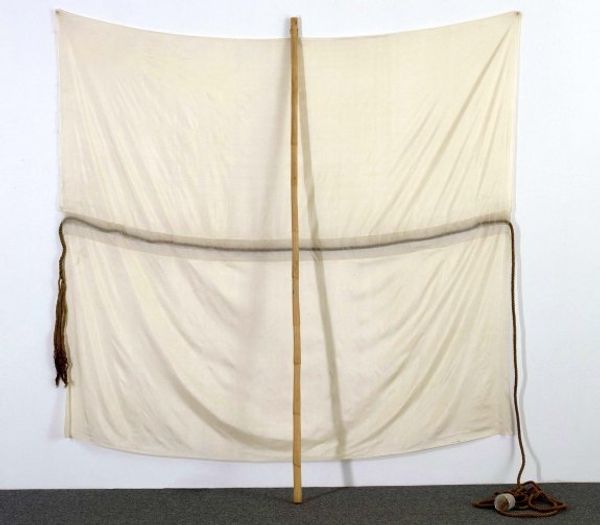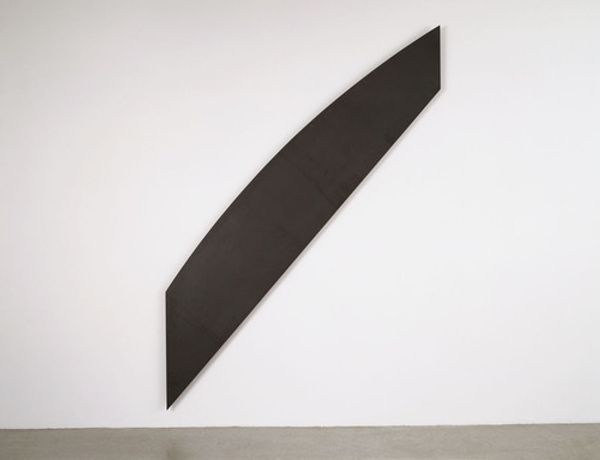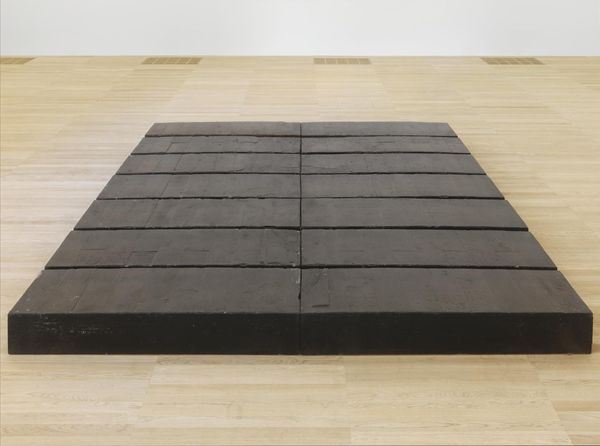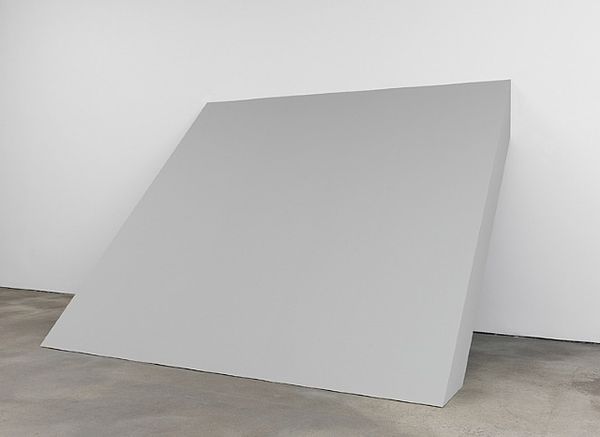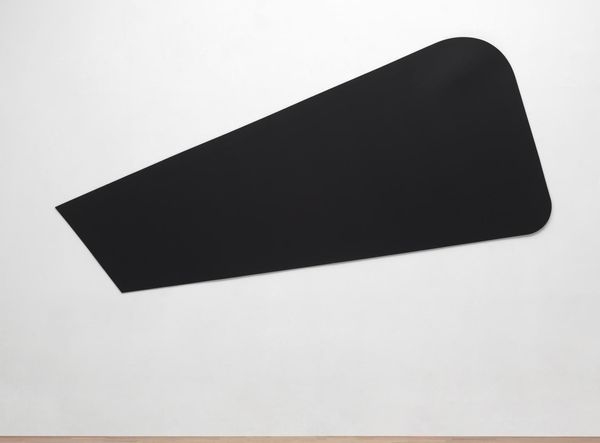
Dimensions: object: 2921 x 5080 x 889 mm
Copyright: © The estate of Barry Flanagan, courtesy Plubronze Ltd | CC-BY-NC-ND 4.0 DEED, Photo: Tate
Curator: At first glance, Barry Flanagan's "june 2 '69" evokes a raw tent or even a makeshift screen. Editor: It's monumental, isn't it? A vast expanse of draped material held by what appear to be slender branches. I'm struck by the interplay between the natural and the constructed. Curator: Flanagan, active during a time of material experimentation, created this from canvas and tree branches. It challenges traditional sculpture. The date is right there, almost like a diary entry. Editor: Yes, the date anchors it to a specific moment. It becomes a cultural artifact reflecting the social and political anxieties of 1969, doesn't it? The rawness could be a metaphor for societal unease. Curator: Indeed. The canvas, a blank slate, carries symbolic weight. We see both vulnerability and resilience in its folds. It's so minimal, and in its reduction it presents so many potential readings. Editor: It is a powerful piece. The stark presentation really highlights the precarious balance between nature and human intervention, doesn't it? Curator: Absolutely. It's a reminder that even the simplest forms can carry profound meaning. Editor: A testament to how art reflects, and refracts, the world around it.
Comments
Join the conversation
Join millions of artists and users on Artera today and experience the ultimate creative platform.
tate 7 months ago
⋮
Flanagan experimented with non-conventional materials, which he considered the most important element in sculpture. Having selected the materials for a given work, he would then remove himself from the process, witnessing the effects of physics on the materials themselves. This is one of a large number of works he made in 1969 in which flax and branches are used. These were often leant against walls or propped in corners, playing with the boundaries between two and three dimensions. Gallery label, January 2016
